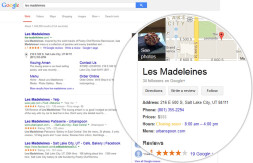5 Ways to Tame Skittish Customers
Customers are sometimes like wild horses — elusive, a bit unpredictable, sometimes infuriating, but still desirable and everyone wants to catch one. So how do you tame these magnificent “beasts”? Remedy the things that make them skittish.
1. Make it easy for them to contact you.
Whether it’s making your phone number prominent on the site or offering live chat, giving the customer a way to get instant answers will help them in their decision to buy from you. Customers are impatient, and waiting for you to respond to an email often means they have moved on to the next store.
2. Don’t make them feel like they are committed.
Comparison shoppers often like to place items in their cart for future reference. A button that says “Add to Cart” will appear a lot more noncommittal than “Buy Now”, especially for less experienced shoppers who may not want to buy just yet. Likewise forcing a user to register before being able to add anything to their cart is a big turn-off. Anything that makes the user feel like you might be trying to force their hand can drive possible customers away.
3. Make shipping costs transparent.
One of the biggest deterrents to online shopping is still the cost of shipping. If customers are forced to register before they are able to find out how much the final total is, then chances are they will leave. Offer them a way to calculate the shipping before checkout, or better yet, offer free shipping. Customers love free shipping.
4. Offer a favorable return policy.
If it doesn’t fit, doesn’t work, or they change their minds, customers want to be able to refund their purchase. Hugely successful stores like Costco and Zappos both offer no-questions-asked return policies so buyers always know they can get their money back if the purchase wasn’t right for them. Confident buyers are return buyers.
5. Make them feel safe.
There are still numerous shoppers who are simply too scared of fraud to hand over their credit card number. Help them build confidence in your store by using trusted security marks, offering a privacy policy, and building a collection of user reviews. Also, go through checkout in your own store to make sure security warning messages don’t pop up.














